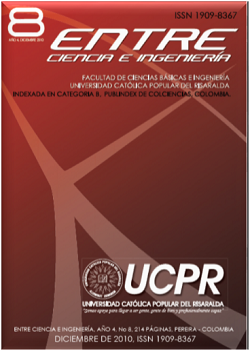Mediators for Basic Sciences Learning Through Graphic Interfaces
Keywords:
Graphical User Interface Matlab GUIDE, didactic resources, ICTsAbstract
When carrying out the teaching process it is very important to consider the use of resources, especially those related to didactic means in order to make it easier both the teaching and learning process. This article introduces the goals and strengths trough the implementation of user´s graphical interfaces as didactic resources that help the understanding of different concepts in Mathematics and physics. Matlab’s Tool GUIDE is used (Barragán, 2006), for the applications design whose aims are, among others, contrasting concepts about Mathematics, Calculus, and Physics. These mediators apart of helping the comprehension of fundamental concepts on these disciplines compare the results as a key aspect when looking for application concepts of the mentioned area. It is exposed the way how these didactic resources are really meaningful as a supporting strategy in order to improve the comprehension processes on concepts about Calculus and Physics, since they allow the activation of cognitive schemas from previous knowledge and the verification of results in a practical way. It is also possible to observe how these tools improve students’ motivation, because they become didactic resources which develop thought structures that stimulate meaningful learning (Molina, 2009).
References
Diaz-Barriga, F. & Hernández, G. (2002). Estrategias Docentes para un Aprendizaje Significativo. Editorial Mc. Graw-Hill, México.
Facello, T. & Osio, E. (2009). Análisis y Conclusiones que Surgen de la Implementación de un Taller de Geometría Dinámica para Alumnos del Profesorado de Matemática. Revista iberoamericana de educación matemática. No. 20. P 141-151.
Granados, R. J. (2007). Los Programas Multimedia en los Procesos de Integración Curricular de las Tecnologías Digitales. En: Revista interuniversitaria de formación de profesorado 21(1), 127-143.
Molina, G. J. (2009). Recursos Didácticos con Matlab: Interfaz Gráfica de Usuario para Caracterizar Curvas en el Espacio Tridimensional. En Tecno Lógicas edición especial diciembre de 2009. Instituto Tecnológico Metropolitano – ITM - . Medellín. Págs. 71-84.
Murcia, E, & Córdoba, H. (2009). Uso de las Tics y Objetos de Aprendizaje para la Enseñanza de las Matemáticas en la UCPR. En: Entre Ciencia e Ingeniería. 3(6), 129- 149.
Pratap, R. (2006). Getting Started With MatLab 7. A Quick Introduction for Scientists and Egineers. New YorkOxford University Press.
The Mathworks Inc. (2004). Creating Graphical User Interfaces, version 7.
Urrego, M. & Castaño, L. (1999). Modelo Pedagógico Instituto Tecnológico Metropolitano. 2ª Edición, 78p, Fondo Editorial ITM, Serie cuadernos de la escuela, Medellín, Colombia.
Barragán G. D. (2006). Manual de Interfaz Gráfica de Usuario en Matlab, Parte I. Recuperado el 15 de agosto de 2010, de Matlab Central: http://www.mathworks.com/matlabcentral/fileexchange/12122








 Revista Entre Ciencia e Ingeniería
Revista Entre Ciencia e Ingeniería .png) entrecei@ucp.edu.co
entrecei@ucp.edu.co.png) ISSN (Impreso) 1909-8367 - ISSN (En Línea) 2539-4169
ISSN (Impreso) 1909-8367 - ISSN (En Línea) 2539-4169 Attribution-NonCommercial 4.0 International (CC By-NC 4.0)
Attribution-NonCommercial 4.0 International (CC By-NC 4.0)
.png) Carrera 21 No. 49-95 Av. de las Américas, Pereira, Risaralda, Colombia
Carrera 21 No. 49-95 Av. de las Américas, Pereira, Risaralda, Colombia